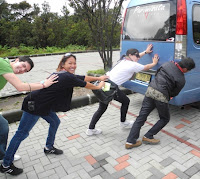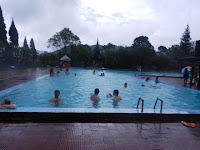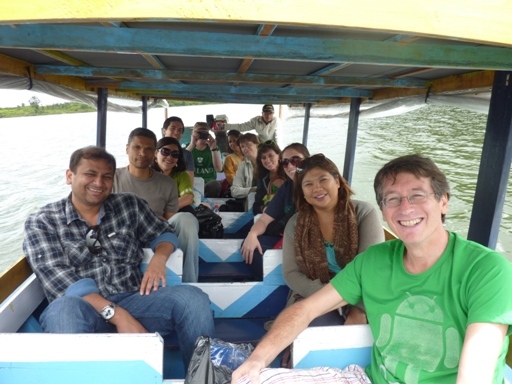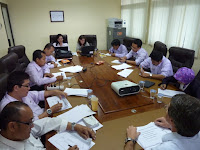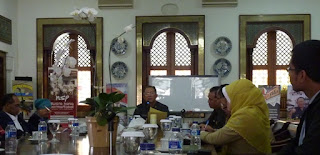Last week in Bandung.
Today we had a
meeting with the head of BPPT and his leadership team. We spent three hours presenting and discussing the outcomes of our project. In a nutshell, our main contribution has been to help BPPT extract their
collective knowledge and to consolidate, develop and agree on (at all
levels of the organization) a set of joint BPPT / IBM recommendations to
support BPPT's transformation.
Today's meeting has been an additional, "final" confirmation that our joint efforts had an impact on BPPT and their perception of IBM as something more than "just" an IT company.
I
underline the word "joint", because this was the key to success. From
the very beginning we worked as a true joint team with our BPPT
counterparts Bpk. Deni, Bpk. Agung and Bpk. Sahal as well as the BPPT coordinators. If I have to mention
one thing that Flavia, Terry and I are bringing home from this
assignment, with no doubts is how easily, productively and with pleasure
we worked together with all people at BPPT, despite our knowledge and
experience come from countries that are at the opposite side of the
world.
This photo on the right is an icon of the climate we lived in these last three weeks.
Thank you BPPT team, we owe you a wonderful experience!
#ibmcsc indonesia
This
is the time when you start looking back at the duties and the hopes for
your assignment, experiencing a mix of feelings: on one hand a sense of fulfillment for
what was achieved in terms of personal and business goals, experiences,
etc., and at the same time the awareness that this time off our "normal"
life is coming to an end, as this coming Friday we are leaving Hotel
Magnolia, our clients, Bandung and ultimately Indonesia.
 |
| The head of BPPT and his leadership team |
Today's meeting has been an additional, "final" confirmation that our joint efforts had an impact on BPPT and their perception of IBM as something more than "just" an IT company.
 |
| This photo: the best gift we could receive |
This photo on the right is an icon of the climate we lived in these last three weeks.
Thank you BPPT team, we owe you a wonderful experience!
#ibmcsc indonesia





